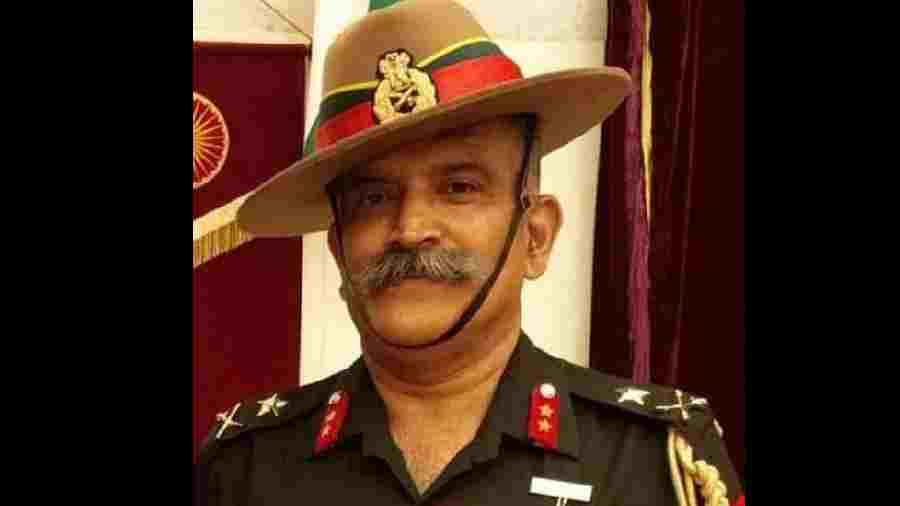The overall situation along the Line of Actual Control (LAC) with China in the eastern theatre is "reasonably calm" and "firmly under control", Eastern Army Commander Lieutenant General Rana Pratap Kalita has said, asserting that the Indian military is fully prepared to deal with any eventuality.
He said the Indian Army's focus has been on boosting its military capability and enhancing the surveillance of activities by the Chinese People's Liberation Army (PLA) along the LAC.The commander said the region has been stable and no major "changes or palpable shift of stance has been noted", in comments that came amid a continuing face-off between Indian and Chinese troops at the friction points of Demchok and Depsang in eastern Ladakh.
He said the Army is in a better position now to monitor the area of its interest in the eastern theatre with the enhancement of infrastructure close to the LAC and induction of various platforms such as drones, helicopters and electronic surveillance equipment.The eastern theatre largely comprises the border areas along the LAC in Sikkim and Arunachal Pradesh and the frontier areas have a number of sensitive forward locations, including in the Tawang and North Sikkim sectors.
"Let me assure you that the Indian Army is fully prepared to deal with any eventuality in the eastern theatre. The border issue with China is being dealt with at all levels to ensure that there is no friction," Lt Gen. Kalita said.
He made the comments during an informal interaction with a group of visiting journalists in Kibithu on Saturday after the Army garrison in the strategic location was named after India's first Chief of Defence Staff, General Bipin Rawat, who died in a helicopter crash on December 8 last year.Lt Gen. Kalita said the Indian Army is continuously monitoring the activities of the PLA along the LAC and is well-poised to mitigate any challenge."We are also continuously monitoring the activities along the borders. We are vigilant and observant of each and every development along our borders," he said.
India has been ramping up the development of infrastructure along the nearly-3,500-km LAC following the eastern Ladakh standoff that began on May 5, 2020.
"We have thoroughly prepared ourselves over the period of time and are well poised to mitigate any challenges and eventualities in the eastern theatre," Lt Gen. Kalita said.
The Eastern Army commander said India and China have a robust mechanism in accordance with bilateral pacts to defuse any emerging situation in the region.
"We have a robust mechanism in place, which is in accordance with the existing bilateral agreements and various protocols to defuse any emerging situation and tension at the tactical level," he said."We are focusing on operational capability development in all spheres. Mainly the area of focus has been infrastructure development, increasing connectivity and modernisation of the armed forces," he noted.
The commander said "presently, the situation along the borders is reasonably calm and firmly under control. There have been reports of continued infrastructure development by the PLA and we are constantly monitoring the same".
He said India has adopted a "whole-of-government" approach to improve the infrastructure in the border areas.
"There have been improvements in forward connectivity, construction of bridge on the Brahmaputra river, laying of new railway lines, improvement of air connectivity to all states in the northeast," he noted.The Eastern Army commander said his troops have a "well-defined" surveillance plan and there has been a substantial improvement in the overall monitoring of the areas."Infusion of latest technology coupled with physical surveillance is the means by which we are enhancing our surveillance capability and capacity," he said.
Asked whether there was any impact of the border row in eastern Ladakh on the eastern sector, Lt Gen. Kalita said the dynamics of the Eastern Command and the Northern Command are totally different as the terrain, the size of the area of operation, the operational dynamics and the objective of operations are all varied in a peculiar way.
"Till now, we have been having cordial relations at the functional level of ground commander and there have been hardly any friction areas in the recent past," he said.
Lt Gen. Kalita said the Indian and Chinese sides have well-instituted mechanisms in place like formal interactions and border personnel meetings to resolve any difference of opinion.The Eastern Army commander was in Kibithu to attend a ceremony where the military station was named after Gen. Rawat.The Indian and Chinese militaries moved back their frontline troops to the rear locations from the face-off site of Patrolling Point 15 in the Gogra-Hotsprings area in eastern Ladakh on Monday and dismantled temporary infrastructure there as part of a five-day disengagement process.
People familiar with the development said the two sides disengaged in accordance with the plan, which also entailed a joint verification of the entire process.On September 8, the two sides announced that they have begun to disengage from Patrolling Point 15 that marked a significant forward movement in the stalled process to pull out troops from the remaining friction points in the region.There has been no progress yet to resolve the standoff in the Demchok and Depsang regions.On the counter-insurgency operations being carried out by the Army in the northeastern region, Lt Gen.
Kalita said the deployment is dictated by the security situation and the violence parameters."The deployment of Army for counter-insurgency duties is dictated by the security situation and the violence parameters. As the situation improves, the Army is de-inducted and the Central Armed Police Forces or police take on the responsibility of ensuring peace and stability," he said."In the northeast, with an improvement in the situation, the Army has got de-inducted and is geared for its primary role," he added.










